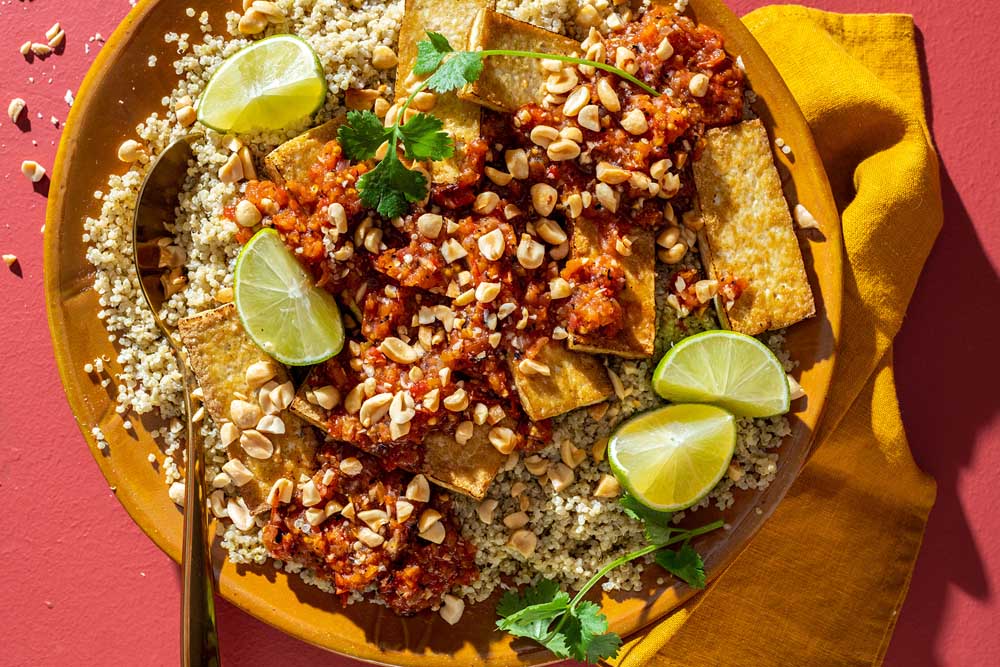Embracing quinoa’s nutty flavor is the key to unlocking its potential
Published 12:00 am Wednesday, September 23, 2020

- When quinoa is cooked in coconut milk, the result is plump, tender quinoa that pairs perfectly with the heat of chiles. This version uses peppers in two ways: fresh Thai chiles and green chile paste.
I have struggled to understand America’s love affair with quinoa. Sure, it’s packed with protein, about eight grams per cup, and it’s quick-cooking, which is always a bonus. But the flavor? I find it dusty and dull, a far cry from the floral overtones of, say, jasmine rice. It also may as well be recommended by dentists, because flossing is a must after a meal of quinoa. Still, after years of ignoring quinoa in favor of other grains, I couldn’t quit the compunction that I hadn’t done enough to give 1uinoa a chance.
Forcing myself to cook and eat quinoa was a chore. I slogged through books, recipes and YouTube videos that inevitably had the word “healthy” in the title, because apparently that’s a quinoa buzzword — flavor is never mentioned. But in the end, all it took was a different descriptive word to help me turn the corner and finally embrace this tiny seed.
Trending
Quinoa is a surprisingly beautiful plant. It grows well in northern California, nestled among the redwood trees and cannabis acreage where the fir-lined roads of Humboldt County are dotted with billboards advertising local quinoa farms. Waving fields of 6-foot-tall quinoa stalks, topped with multicolored plumes of seeds, made me long for a way to make quinoa taste as lovely as it looks.
In quinoa’s native Peru, it’s typically served as a topping on rice — which might sound like overkill to the carb-conscious until they understand that quinoa is a member of the amaranth family, a pseudocereal, meaning it’s a plant that looks and acts like a grain but, like millet and buckwheat, isn’t actually one.
I adore amaranth. I practically inhaled the malty amaranth cookies of my hippie childhood. So, when I turned to Karen Page’s comprehensive reference book, “The Vegetarian Flavor Bible,” amaranth became the starting point of my quest to understand what other ingredients might quell — or complement — quinoa’s earthiness. Amaranth is slightly sweeter than quinoa (some folks say black quinoa is sweeter than white or red quinoa,) and many ingredients work well with both, from black beans and garlic to spinach and tomatoes.
Those flavor combinations are a great place to begin, but quinoa still becomes the afterthought, barely a supporting player on the plate.
The other descriptive word associated with quinoa that kept coming up was “nutty.” The more I read that descriptor, the more I started thinking about the taste and texture of raw nuts such as almonds and walnuts. To me, they also taste dusty, but in a more pleasing way.
Bingo.
Trending
Nuts are an ingredient I understand — and like. So, once I started pairing quinoa with flavors I might pair with nuts, I hit my stride. Quinoa with basil? Yes! Quinoa with spicy chiles? Heck yeah! Quinoa with coconut? A gift from the heavens. Quinoa’s not just a thing to fill your belly, an additive for a healthy grain bowl or an afterthought in a granola bar — it’s an ingredient that deserves to be cooked with respect. Only then can quinoa come into its own.
Turns out, I do like quinoa now. Treated as a substantial ingredient, quinoa brings more to the plate than just protein and fiber. So, go ahead and give it some love.
Green Curry-Coconut Quinoa With Tofu and Chile-Garlic Sauce
Active: 15 minutes | Total: 45 minutes
4 servings
Storage Notes: The cooked quinoa and tofu can be refrigerated for up to 4 days, though the tofu will lose its crispy texture.
Ingredients
Two 13.5-ounce cans full fat coconut milk
Kosher salt
2 cups (13 1/2 ounces) white quinoa
1 fresh red Thai chile, slit down the middle on one side (may substitute jalapeño or habanero chile)
2 tablespoons Thai green curry paste
One (14-ounce) package extra-firm tofu
2 tablespoons vegetable or another neutral oil
Freshly ground white pepper (may substitute black pepper)
1/2 cup Jeow Marg Len or your favorite chile-garlic sauce, such as sambal oelek
1/4 cup (1 ounce) roasted salted peanuts, roughly chopped
Lime wedges, for serving
Fresh cilantro, for serving
Directions
Make the quinoa: In a medium saucepan over medium-high heat, combine the coconut milk and a generous pinch of salt and bring to a lively simmer. Stir in the quinoa and chile. Reduce the heat to low, cover and simmer gently, stirring midway through to prevent scorching on the bottom, until the quinoa is slightly sticky and toothsome and the coconut milk is mostly absorbed, 15 to 25 minutes. Remove from the heat and let sit, covered, for another 5 minutes. Stir in the curry paste and set aside.
Make the seared tofu: Pat the tofu dry with towels, then slice across into 8 equal pieces. Pat each piece dry.
In a large skillet over medium-high heat, heat 2 tablespoons oil until shimmering. Add the tofu and sear until golden and crisp along the edges, 4 to 5 minutes. Turn over and sear on the other side until golden and crisp, 4 to 5 minutes. Transfer the tofu pieces to a paper towel-lined plate and immediately season lightly with salt and pepper.
To serve, pile the quinoa on a large serving platter, then top with the seared tofu and spoon the jeow marg len or chile-garlic sauce over the top. Garnish with the peanuts, lime wedges and cilantro and serve right away.






